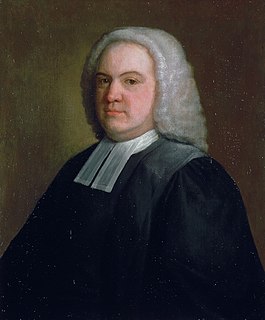Related Research Articles

Nathaniel Bliss was an English astronomer of the 18th century, serving as Britain's fourth Astronomer Royal between 1762 and 1764.

Charles Calvert, 5th Baron Baltimore, was a British nobleman and Proprietary Governor of the Province of Maryland. He inherited the title to Maryland aged just fifteen, on the death of his father and grandfather, when the colony was restored by the British Monarchy to the Calvert family's control, following its seizure in 1688. In 1721 Charles came of age and assumed personal control of Maryland, travelling there briefly in 1732. For most of his life he remained in England, where he pursued an active career in politics, rising to become Lord of the Admiralty from 1742 to 1744. He died in 1751 in England, aged 52.

Fletcher Norton, 1st Baron Grantley, PC was an English lawyer and politician who sat in the House of Commons from 1756 to 1782 when he was raised to the peerage as Baron Grantley.
James Douglas was a Scottish physician and anatomist, and Physician Extraordinary to Queen Caroline.

The Reverend John Lightfoot was an English parson-naturalist, spending much of his free time as a conchologist and botanist. He was a systematic and effective curator of the private museum of Margaret Bentinck, Duchess of Portland. He is best known for his Flora Scotica which pioneered the scientific study of the plants and fungi of Scotland. He was elected a Fellow of the Royal Society for his scientific work.
He was an excellent scholar in many branches of literature; but after the study of his profession, he addicted himself chiefly to that of botany and conchyliologie [sic]. He excelled in both.
Events from the year 1700 in England.
Events from the year 1699 in England.
Meyer Löw Schomberg was a German-Jewish physician who moved to London and had a successful business there.

Sir Harry Verney, 2nd Baronet PC, DL, JP was an English soldier and Liberal politician who sat in the House of Commons variously between 1832 and 1885.

Mårten Triewald FRS, sometimes referred to as Mårten Triewald the Younger, was a Swedish merchant, engineer and amateur physicist.
George Heathcote was an English merchant and philanthropist and Tory politician who sat in the House of Commons from 1727 to 1747. He was Lord Mayor of London in 1742.
The Right Hon. Lord Robert Ord FRS MP was a British lawyer and politician.

Sir William Ashburnham, 4th Baronet was a Church of England priest and also a baronet.
References
- ↑ "Fellows of the Royal Society". London: Royal Society. Archived from the original on 2015-03-16.
- ↑ Triewald, M. (1742). "A Letter from Martin Triewald, F. R. S. Captain of Mechanics, and Military Architect to the King of Sweden, to C. Mortimer, M. D. Sec. R. S. Concerning the Vegetation of Melon-Seeds Forty-Two Years Old". Philosophical Transactions of the Royal Society of London. 42 (462–471): 115. doi:10.1098/rstl.1742.0030.